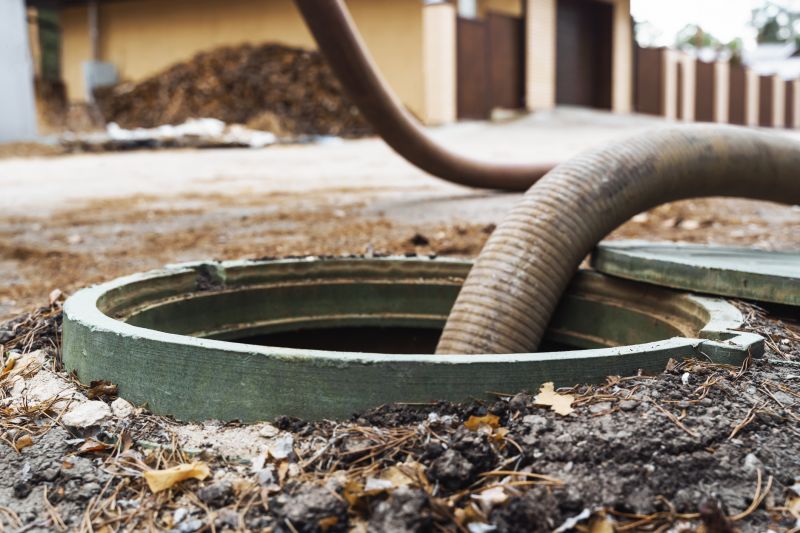Leading Equipment For Septic Inspection Service Success
Equip your team with the most reliable and effective products to improve inspection quality and customer satisfaction.
 Septic inspection products are essential tools for assessing the condition of septic systems, ensuring proper functionality and identifying potential issues before they escalate. These products range from specialized testing equipment to visual inspection tools, each designed to provide detailed insights into the system's performance. Regular use of these tools can help homeowners and service providers maintain septic health, prevent costly repairs, and ensure compliance with local regulations.
Septic inspection products are essential tools for assessing the condition of septic systems, ensuring proper functionality and identifying potential issues before they escalate. These products range from specialized testing equipment to visual inspection tools, each designed to provide detailed insights into the system's performance. Regular use of these tools can help homeowners and service providers maintain septic health, prevent costly repairs, and ensure compliance with local regulations.
Top Overall Option
Multi-Function Septic Inspection Kit
A comprehensive septic inspection kit combines various diagnostic tools, including sensors, cameras, and measurement devices, to provide a thorough evaluation of septic systems. Designed for versatility, it enables users to perform detailed inspections, detect leaks, and assess tank conditions with ease. Its user-friendly interface and durable construction make it suitable for both professional inspectors and experienced homeowners seeking reliable results.
Types of Products For Septic Inspection Service
Electronic Tank Level Sensors
Devices that measure the liquid level within septic tanks, helping to determine when maintenance or pumping is needed.
Portable Septic Camera Systems
Handheld or vehicle-mounted cameras designed to inspect pipes and tank interiors for blockages or damage.
Leak Detection Monitors
Sensors that identify potential leaks in pipes or tank seals, alerting users to possible issues.
Flow Meters and Gauges
Tools to measure flow rates and volume within septic systems during inspection or maintenance.
Drain Field Inspection Tools
Specialized probes and sensors for evaluating the condition of drain fields and absorption beds.
Chemical Test Kits
Sets for analyzing water quality and identifying potential contamination or system imbalance.
Ultrasonic Thickness Gauges
Devices that measure the thickness of tank walls to assess structural integrity.
Pressure Testing Equipment
Tools used to evaluate the pressure integrity of pipes and tank components.
Inspection Rods and Probes
Manual tools for reaching into tanks or pipes to visually inspect or locate obstructions.
Data Logging Devices
Electronic units that record inspection data over time for comprehensive analysis.
Drain Field Soil Test Kits
Tools to evaluate soil absorption capacity and identify potential drain field issues.
Popular Choices
Portable cameras designed for easy inspection of tank interiors and pipelines, popular for their clarity and ease of use.
Wireless sensors that provide real-time tank level data, favored for ongoing system management.
Affordable sensors that help identify early signs of leaks, widely used in residential inspections.
Handheld flow meters used during inspections to verify system performance and flow rates.
Simple probes for assessing soil absorption and drain field health, commonly used in routine checks.
Water testing kits that are easy to use and provide quick results for septic system analysis.
Durable gauges that help detect corrosion or deterioration in tank walls and pipes.
Complete sets for testing pipe and tank pressure integrity, popular among professionals.
Long, flexible rods that facilitate visual inspection in tight or hard-to-reach areas.
Devices that log inspection parameters over time, aiding in trend analysis and long-term maintenance planning.
Many septic inspection products focus on detecting leaks, measuring tank levels, and inspecting the integrity of pipes and components. Advanced devices may include electronic sensors, cameras, and diagnostic tools that facilitate thorough evaluations without invasive procedures. Proper selection of inspection tools depends on the size, type, and complexity of the septic system, as well as the specific needs of the inspection process.
Investing in reliable inspection products can streamline the maintenance process, reduce guesswork, and promote proactive management of septic systems. Whether for routine checks or troubleshooting specific issues, having the right tools ensures accurate assessments and effective decision-making. As technology advances, newer products offer enhanced precision, ease of use, and comprehensive reporting capabilities, making septic inspections more efficient and less disruptive.
Ultimately, choosing the appropriate septic inspection products involves considering compatibility with existing systems, ease of operation, durability, and the scope of inspection features offered. Properly equipped, inspectors and homeowners can better understand system health, plan maintenance schedules, and avoid unexpected failures. Staying informed about the latest tools and innovations in septic inspection can lead to more effective management and peace of mind.
Key Buying Considerations
- Compatibility with existing septic system types and sizes.
- Ease of use, especially for non-professional users.
- Durability and build quality suitable for frequent inspections.
- Range and reach of inspection tools, especially for large systems.
- Image and data quality for accurate diagnosis.
- Portability and weight for ease of transport and handling.
- Battery life and power options for cordless devices.
- Integration with other inspection tools or software for comprehensive analysis.
- Cost and value relative to the features offered.
- Availability of technical support and warranty services.
- Frequency of required maintenance or calibration of the device.
- Ability to detect multiple issues such as leaks, blockages, or structural damage.
- Size and storage considerations for portable equipment.
- Compliance with safety standards and regulations.
This page contains affiliate links. We may earn a commission if you make a purchase through these links, at no additional cost to you.
